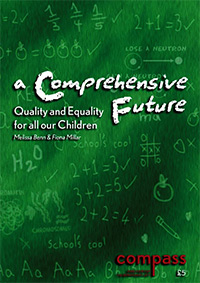Charitable status – a suitable case for the cuts consultation
I am grateful to my other half for his robust blog pointing out that George Osborne ( St Pauls) and David Cameron (Eton) could start their cuts programme by getting rid of charitable status for fee-paying schools. Whenever anyone raises this question, the usual reaction is that it isn’t worth very much money (around £100 million a year extra raised in taxes actually) which makes you wonder why the fee-paying sector is so desperate to keep it.
The benefits wouldn’t only be financial but to the whole education system, which is disadvantaged by creaming off children from an affluent elite into different schools where they often fail to encounter their less well off peers. This was brought home to me vividly when I spoke to the John Locke Society at Westminster school about the unfairness of state private/ school divide. At the end a young man in the front row , a pupil at one of the country’s most socially and academically elite institutions, stood up and asked why the divide mattered since, as he put it, ‘Surely the country needed people to sweep the streets’.
Several months later I was taking part in a debate at the Cambridge. One undergraduate, more thoughtful and sensitive than his peer at Westminster, explained to me that the gulf between his London private school and a neighbouring comprehensive was so great that the students were instructed to use separate tube stations for their journeys each day.
How can a system that creates this sort of divide provide ‘public benefit’ – one of the definititions of a charity. Clearly private schools benefit some. If you are at Eton for example, for around £29,000 a year, plus extras, (above the average income of the majority of British citizens), you can enjoy a teaching ratio of 8 pupils to 1 teacher. The average in the state sector is around 26:1. You can play polo, enjoy boating lakes, recording studios and a fully equipped theatre. You will have representatives from Oxford and Cambridge on your governing body. You will wear a uniform which distinguishes you from all your peers and you can play sports (like the Wall Game) that aren’t played anywhere else in the world, confirming that you are indeed part of an exclusive elite with easy access to the top universities and jobs, as the Sutton Trust research into the professions repeatedly shows.
It is a similar story across of range of other private schools, less exclusive maybe, with fewer Harry Potter towers, but essentially the same message. Parents who can afford to pay a lot, can get a lavish education for their offspring, a fast track into the best universities and a head start in life as the Sutton Trust‘s investigations into the educational backgrounds of the top professions show. But they are bad for society. Attempts by their head teachers and the Independent Schools Council to present them as ‘inclusive communities’ won’t wash. This is based on their bursary schemes – all academically selective so unlikely to benefit the poorest children, who fall behind before they even reach nursery, let alone a Common Entrance exam – and misleading information about the post codes from which they take their pupils.
Private schools do take some pupils from postcodes that include areas of high deprivation. But large pockets of wealth and advantage often exist within those postcodes. So the child from an inner London borough at the highly selective London day school is much more likely to be the child of an accountant, a city broker or a lawyer than a child eligible for free school meals, one of the most commonly used indicators of disadvantage.
Yet the child on free school meals, from a low income home or in care, with emotional or behavioural difficulties will have his or her chances in a local school diminished by the flight of wealthier neighbours into the private sector. This goes to the heart of why private schools are bad for society and cost the tax payer dearly.They act as a break on social cohesion and social mobility. They cream off able students and aspirant parents from the state system and reduce every other child’s chance of being educated in a real comprehensive school.
Above all they divide young people by race, class and family income at a time when more than ever we should be bridging those divides. The gap between the rich and the poor is still wide and many people are facing unemployment, cuts in public spending and pay freezes. Yet they see those with advantage and money continuing to reap disproportionate rewards.
No one is pretending that schools alone can override the huge inequalities in society. But schools can create powerful bonds. Schools can help to overcome prejudice and lazy assumptions about class and ethnic background. They can act as a mirror to the sort of society most of us would like to see. One in which children and young people can share their common humanity rather than see each other as rich, poor, chavs or snobs with the inevitable ill will that breeds.
Axing charitable status may raise a relatively small sum – I can think of many schools that would gladly have a slice of it nonetheless. George and Dave like to tell us we are ‘all in it together’. Even though I doubt the cuts they are planning will affect their lives much. Getting rid of charitable status would be one way of showing they meant it.




